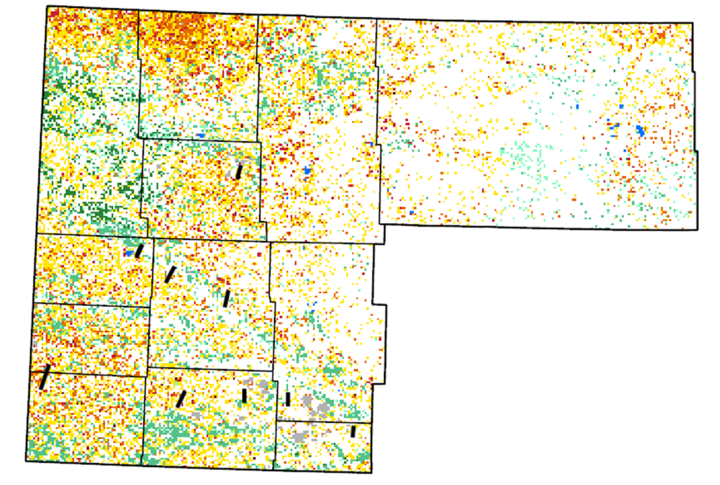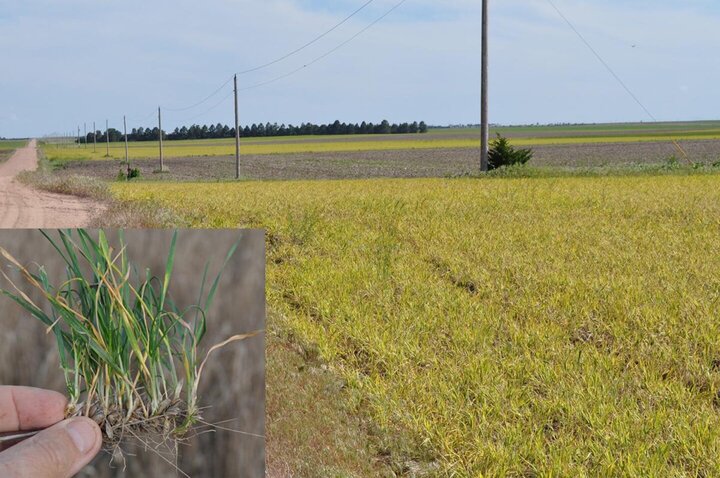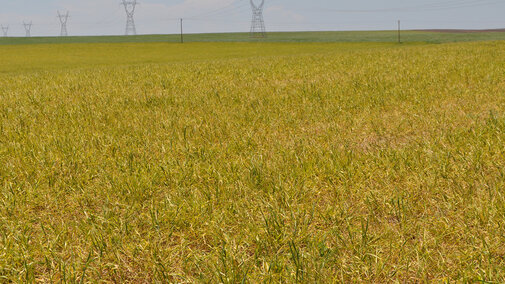Throughout June and July 2025, many areas in the Panhandle experienced severe hailstorms before wheat harvest. It is highly likely that some of these hailstorms have created high-risk situations for the development of serious wheat streak mosaic disease (WSMD) infections in the wheat crop that will be planted soon.
Figure 2 shows approximate locations where hail was reported. It is likely that this is an underestimate of where hail actually fell, and it is possible some of those hail swaths are continuous.
Wheat growers in areas where hailstorms occurred during the critical pre-harvest window (three weeks prior to harvest) are encouraged to scout for volunteer wheat. If volunteer wheat resulting from these pre-harvest hailstorms is present, it is imperative that farmers control that volunteer wheat before emergence of the new wheat crop to reduce the risk of severe WSMD outbreak in the next wheat crop.
Herbicide options to control volunteer wheat and annual grasses can be found in the “Guide for Weed, Disease, and Insect Management in Nebraska"1 (Nebraska Extension NebGuide EC130).

A recent UNL study2 reinforced the significant impact of well-timed hailstorms that occurred within the three weeks before harvest on the following wheat crop in the region. The key player here is the pre-harvest volunteer wheat induced by the hailstorms, which can serve as a “green bridge” for the WSMD viruses and their vector — wheat curl mites — to survive between harvest and planting.
Significant losses of the next wheat crop will occur if volunteer wheat infested with mites and infected with the viruses is not well controlled, because mites carrying WSMD viruses can easily spread to the new wheat crop from this pre-harvest volunteer wheat (Figure 3).

There are more advantages of controlling volunteer wheat in addition to WSMD management, such as reducing soil water loss and risks of other diseases or insect infestation. More information can be found in the article “Reasons You Will Want to Control Volunteer Wheat and Weeds in Wheat Stubble After Harvest” published on June 19, 2024 on CropWatch3.
References
- 2025 Guide for Weed, Disease, and Insect Management in Nebraska
- Chen, D., Hein, G. L., Adams-Selin, R., Wang, L., Zhang, J., Zhou, X., Ma, H., McMechan, J., & Shi, Y. (2024). Spatial relationship between pre-harvest hail and the impact from the wheat streak mosaic disease complex by using remote sensing data. Crop Protection, 179, 106627. https://doi.org/10.1016/J.CROPRO.2024.106627
- “Reasons You Will Want to Control Volunteer Wheat and Weeds in Wheat Stubble After Harvest”, CropWatch, June 19, 2024.

